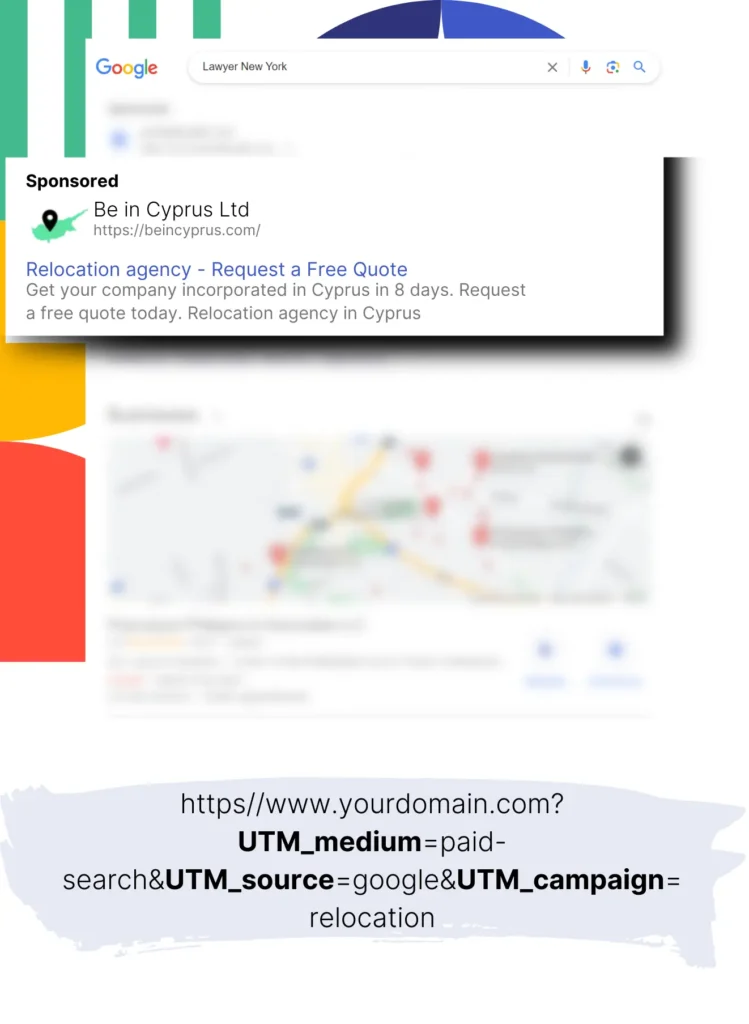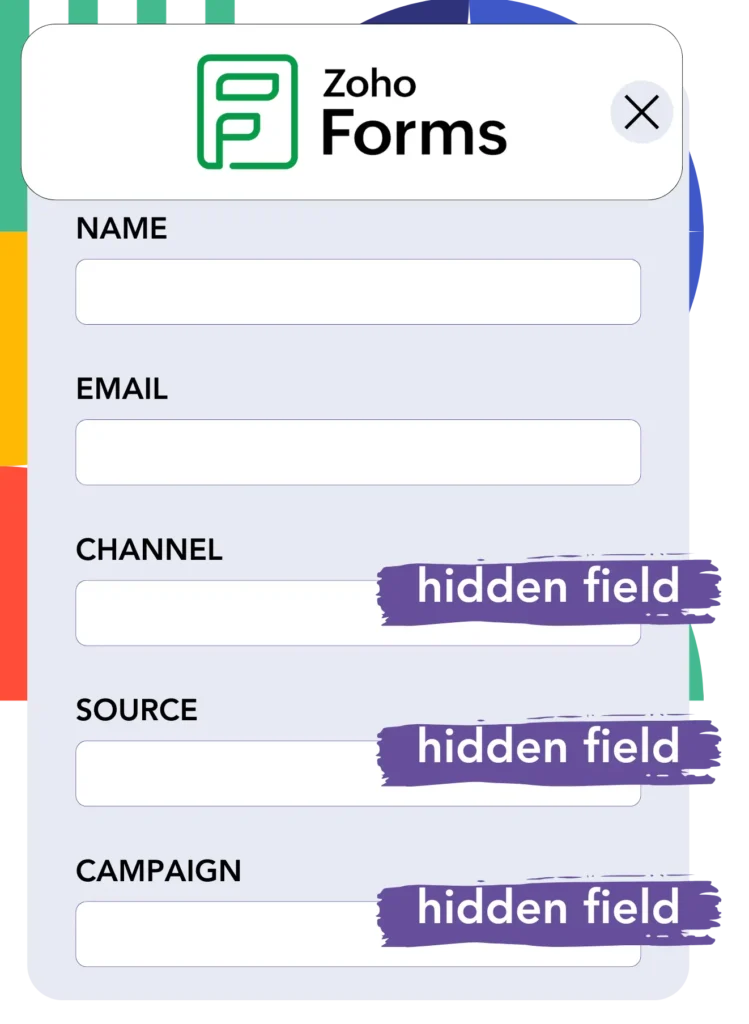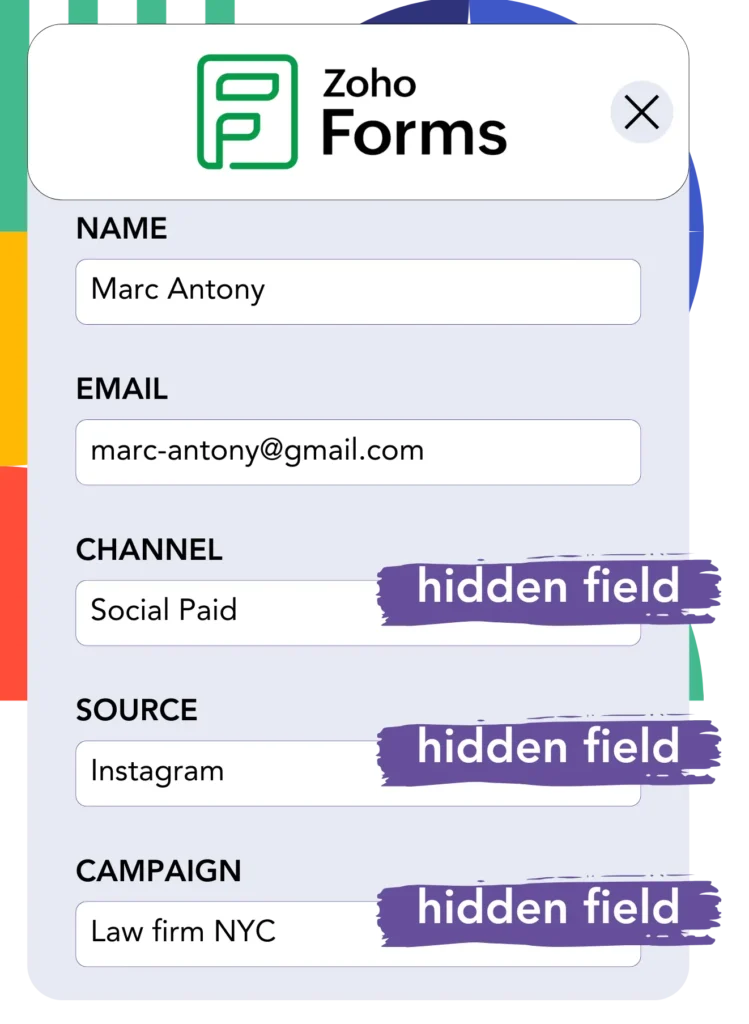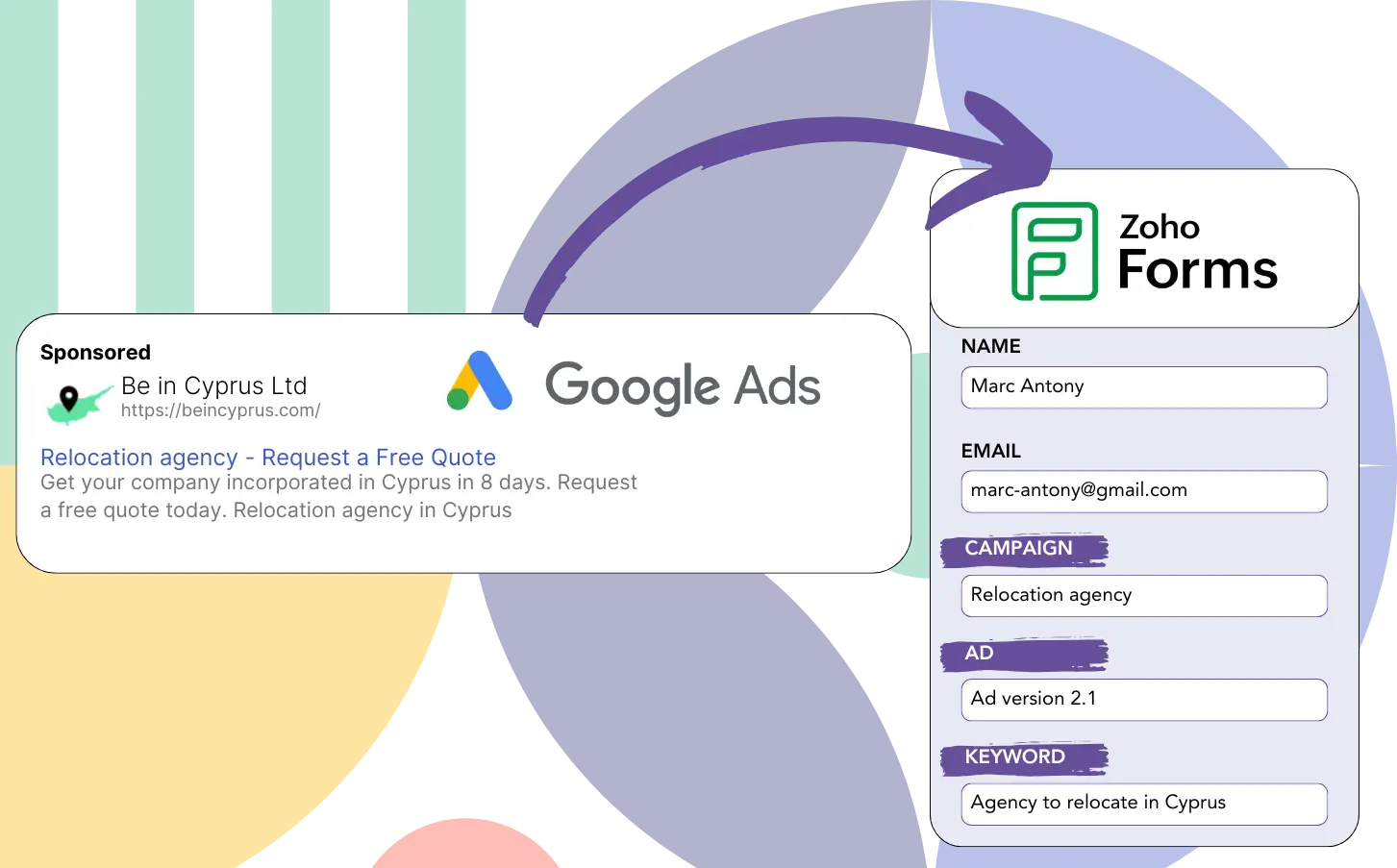Google Ads are showing you the number of leads you have generated, but do you know which specific campaigns are driving your leads?
This problem is often seen. Google Ads indicates lead totals per campaign, ad, or keyword, yet lacks specifics on each lead.
Thus, you are left without the ability to know which campaign, ad, or keyword created the leads that converted into customers.
LeadSources overcomes this challenge.
With LeadSources, you can track Google Ads data (campaign, ad, keyword, etc.) for every individual lead.
You can then record Google Ads data (campaign, ad, keyword, etc.) in Zoho Forms for every lead generated.
This lets you run reports such as “Keywords that generated the most leads” and make informed decisions about promoting or canceling keywords.
Let’s move forward!
Capture Google Ads lead data in Zoho Forms in 4 steps
Step 1: Add Leadsources in the head tag of your website

Sign up to Leadsources.io, and benefit from our 14-day free trial.
Add the LeadSources code in the head tag of your website. No coding background is needed.
Simply follow this easy step-by-step guide.
Step 2: Add the UTM parameters to your Google Ads campaigns

Insert the UTM parameters you plan to track in each Google Ads campaign.
Here are several UTM parameters you can apply to your ad:
- UTM_source
- UTM_campaign
- UTM_term
- UTM_content
Besides UTM parameters, LeadSources collects details like the channel, landing page, and subfolder, offering a complete view of each lead.
Step 3: Add the hidden fields in Zoho Forms

LeadSources automatically adds Google Ads data (campaign, ad, keyword, landing page, etc.) to the hidden fields in your Zoho Forms (name, email, etc.) when visitors complete them.
For this task, consult this step-by-step guide to incorporate hidden fields in Zoho Forms.
The Google Ads data will be directly recorded in your Zoho Forms by LeadSources.
Step 4: Capture the Google Ads data in Zoho Forms

When a user clicks on your Google Ads ad and ends up on your page, LeadSources records the Google Ads data (campaign, ad, keyword, landing page, etc.).
The Google Ads data is automatically transferred into the hidden fields of your Zoho Forms by LeadSources.
When the form is submitted, LeadSources sends the Google Ads data and the form responses to the Zoho Forms submissions page.
How does Leadsources work?
Placing the LeadSources code into your website’s head tag enables it to capture Google Ads data (UTM parameters and referrer) every time a visitor comes to your site.
After this, the Google Ads data is saved into the hidden fields of your Zoho Forms.
Even without UTM parameters in the URL, LeadSources will use the referrer to collect data about visitors:
- Channel
- Source
- Campaign
- Landing page
- Landing page subfolder
This strategy allows you to capture key lead source data even when UTM parameters are not included, including:
- On Google Search
- On your Instagram bio link
- On your social media posts
- Etc.
Most tools capture lead data only with UTM parameters (especially for paid and referral sources) – which can be an issue!
All channels are covered by LeadSources for capturing lead data, even if UTM parameters are not included:
- Organic Search
- Paid Search
- Organic Social
- Paid Social
- Referral
- Affiliate
- Display Advertising
- Direct Traffic
This facilitates the collection and centralization of all lead source data into one location.
Pro tip:
Track Google Ads data in all the popular online form builders, including Cognito Forms, Gravity Forms, Jotform, Typeform, WPForms, and more. Learn how to add Google Ads UTM parameters in any form builder.
How to run performance reports
With the Google Ads data in Zoho Forms, you are able to generate performance reports including:
- Leads per campaign
- Leads per ad
- Leads per keyword
- Etc.
This guides you in making better decisions regarding your Google Ads spending.
Let’s explore the range of reports you can make.
Lead performance reports
Reports can be run to illustrate the number of leads generated by:
- Channel
- Campaign
- Ad
- Keyword
- Landing page
- Landing page subfolder
Example #1
Export data from campaigns across multiple channels (SEO, PPC, email, etc.) to generate a report named “Leads by Channel.”

Example #2
Once you determine which channel generates the highest number of leads (e.g., Google Ads), you can focus on this channel to see the lead count for each specific ad campaign.

Example #3
After finding the campaign with the highest lead count, you can explore which specific keywords are generating these leads.

Sales performance report
Understanding which ads and keywords attract the most leads is valuable, but do they also improve your revenue?
Integrating your Zoho Forms submissions with a CRM allows for the creation of extensive sales reports.
Example:
| Channels | Search Paid | Social Paid |
| Leads | 50 | 75 |
| Sales | 5 | 6 |
| Average order value | $150 | $100 |
| Revenue | $750 | $600 |
After evaluating ads on Google and Facebook, it became evident that Social Paid ads generated more leads compared to Search Paid ads.
After several weeks of reviewing lead conversions, it’s evident that the Search Paid channel generated more revenue with fewer leads than the Social Paid channel. This informs the decision to increase the Search Paid campaign budget.
LeadSources tracks the source of each lead in Zoho Forms, whether they come from ads, organic search, social, email, etc. and syncs that data with each submission. See the full breakdown on the lead source in Zoho Forms page.

